Safety Assurance activities are fundamental components of any effective Safety Management System (SMS). These activities involve systematic and ongoing monitoring, recording, and evaluation of an organization’s safety performance and safety management processes to ensure that the SMS is operating according to expectations and requirements.
At its core, Safety Assurance is about making sure that safety objectives are not only set but are also being met through proactive measures and continuous improvement. It includes:
- Monitoring Compliance and Performance: This involves regularly checking that the organization follows safety guidelines and principles effectively. It ensures that safety practices are not just theoretical but are being implemented practically across the board.
- Managing Changes: Safety Assurance addresses managing changes within an organization’s operation that might introduce new risks or affect existing safety risk controls. This is crucial as even minor operational changes can have significant safety implications.
- Continuous Improvement: This revolves around using feedback from monitoring and evaluation processes to continuously improve safety measures, thereby ensuring the SMS evolves and adapts to new challenges and changes in the operational environment.
Moreover, Safety Assurance is strategic in nature, as it not only focuses on what is currently happening but also on what could happen in the future. It requires an organization to be forward-thinking and prepared for potential risks, ensuring that all safety measures are robust and sustainable.
Understanding and effectively implementing Safety Assurance helps organizations maintain high safety standards, ultimately aiming to minimize risks and protect all stakeholders from potential harm.
Table of Contents
Core Elements of Safety Assurance
Data Collection and Analysis
Safety performance monitoring revolves around gathering safety data from various sources to make informed decisions. This data can include hazard and safety reports, safety surveys, safety audits, and findings from safety investigations. For effective monitoring, it’s essential to collect data that can support informed decision-making and help identify trends and potential issues early on .
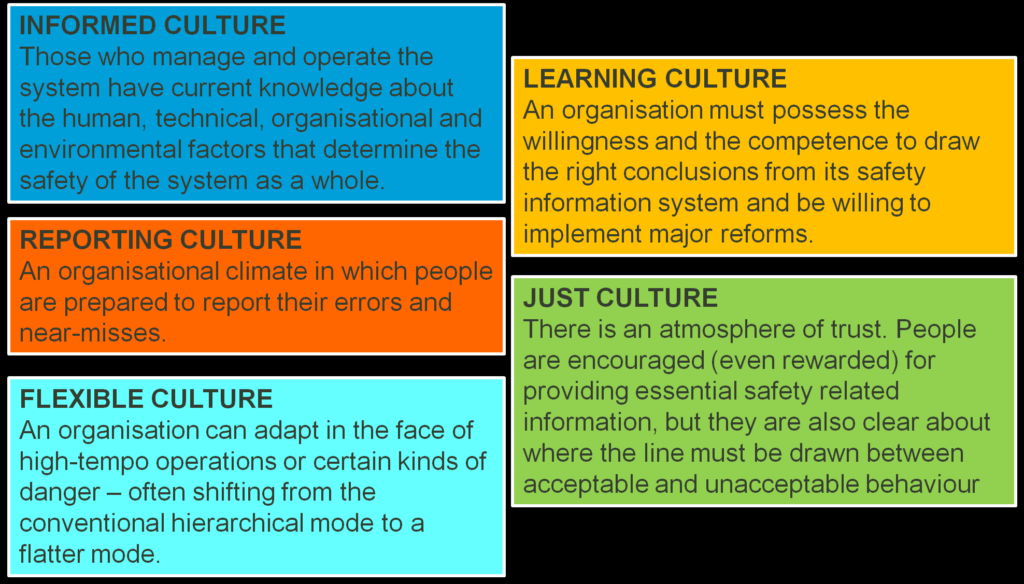
Safety Performance Indicators (SPIs) and Targets (SPTs)
These indicators and targets help in measuring the effectiveness of the implemented safety measures. For example, organizations may track the number of major risk incidents, the frequency of safety audits, or the percentage of staff completing safety training on time. The specific SPIs and SPTs should be relevant to the particular operations of the organization to ensure meaningful performance monitoring .
Practical Examples of Performance Indicators
To illustrate, an organization might have targets like “Number of major risk incidents (1 or less),” “Percentage of staff completing safety training before due dates (95%),” or “Number of internal audits per calendar year (4).” These performance indicators and targets guide organizations on what aspects need monitoring and improvement .
Management of Change
Managing changes within an organization systematically is vital for maintaining safety. Change management in the context of safety assurance involves:
- Identifying Hazards and Risk Assessments: Before implementing changes, potential safety hazards should be identified, and a safety risk assessment should be conducted. This involves evaluating the impact of changes on existing hazards and safety risk controls using the existing safety risk management processes.
- Developing and Implementing an Action Plan: An action plan is essential for defining what needs to be done, by whom, and when, to ensure safety during the change implementation. This plan should link back to the hazard identification and risk assessment, assigning tasks with clear timelines, responsibilities, and resources.
- Assurance Planning and Ongoing Monitoring: Post-implementation, it is crucial to have a follow-up plan to ensure that the change remains safe. This includes ongoing monitoring of safety performance, conducting audits, and adapting the change process as necessary based on feedback and new information.
Continuous Improvement of the SMS
Continuous improvement is a cornerstone of an effective SMS. Safety Assurance helps in this by:
- Review and Evaluation Techniques: Regular reviews and evaluations of all parts of the SMS ensure that they remain relevant and effective. This involves using SMART (Specific, Measurable, Achievable, Relevant, Time-bound) objectives to gauge improvements and areas needing attention .
- Proactive and Reactive Safety Improvement Measures: It is necessary to adopt both proactive and reactive measures for continuous improvement. Proactive methods include regular audits, safety performance reviews, and setting new objectives based on current trends and data. Reactive methods involve using the lessons learned from past incidents and investigations to prevent recurrence .
By focusing on these core elements – Safety Performance Monitoring and Measurement, Management of Change, and Continuous Improvement – organizations can create a robust Safety Assurance framework that not only meets compliance requirements but also fosters a proactive safety culture.
Tools and Resources for Effective Safety Assurance
In managing an effective Safety Assurance process, certain tools and resources are essential to ensure the safety measures are not only compliant but genuinely effective in managing and mitigating risks. Here’s an overview of the practical instruments required to enhance the Safety Assurance processes in any project.
| Category | Tool/Resource | Description | Purpose/Benefit |
|---|---|---|---|
| Safety Performance Monitoring | Performance Indicators and Targets | Establishes clear Safety Performance Indicators (SPIs) and Safety Performance Targets (SPTs) to monitor and measure safety practices’ effectiveness. | Assesses safety performance against standards and objectives, such as incident frequency and compliance rates. |
| Safety Performance Monitoring | Data Collection Systems | Gathers information from sources like incident reports, safety meetings, and operational data to process and analyze for identifying trends and areas needing attention. | Enables proactive risk management through robust data analysis. |
| Management of Change | Risk Assessment Procedures | Conducts thorough assessments before operational changes to identify potential hazards and evaluate existing risk controls. | Ensures new or modified operations maintain safety levels by identifying potential hazards. |
| Management of Change | Action Planning and Tracking Systems | Defines tasks, responsibilities, and timelines for implementing changes, and tracks progress to ensure all safety measures are executed as planned. | Monitors implementation progress and ensures safety measures are properly executed. |
| Continuous Improvement | Audit Programs | Conducts regular safety audits to assess the effectiveness of safety management practices and identify improvement areas. | Assesses ongoing effectiveness of safety practices and identifies improvement areas. |
| Continuous Improvement | Feedback and Review Processes | Establishes formal mechanisms for feedback and review to learn from successful outcomes and near-misses. | Facilitates continual learning and enhancement of safety assurance practices. |
| Continuous Improvement | Safety Culture Development Strategies | Promotes a strong safety culture through training programs, communication of safety values, and recognition schemes for exemplary safety behavior. | Influences behavior and attitudes towards safety in daily operations, fostering a proactive safety environment. |
| Investigative Resources | Incident Investigation Tools | Conducts thorough investigations to identify not just what went wrong, but also the root causes of incidents. | Strengthens safety measures by uncovering root causes and learning from incidents. |
| Investigative Resources | Reporting Tools | Provides clear and effective tools for documenting findings from safety monitoring, audits, and investigations. | Ensures transparency and facilitates collective learning and accountability through accessible reports. |
Safety Performance Monitoring Tools
To monitor and measure the effectiveness of safety practices accurately, organizations should establish clear Safety Performance Indicators (SPIs) and Safety Performance Targets (SPTs). These metrics are crucial for assessing the safety performance against predefined standards and objectives, such as the frequency of incidents, compliance rates with safety trainings, or audit findings.
Effective safety assurance relies heavily on robust data collection systems that gather information from various sources like incident reports, safety meetings, and operational data. These systems should be capable of processing and analyzing data to identify trends and areas requiring attention, which in turn helps in proactive risk management.
Management of Change Tools
Before any operational change, conducting thorough risk assessments is crucial. These assessments help identify potential hazards that the change might introduce and evaluate the sufficiency of existing risk controls. It ensures that all new or modified operations maintain the desired safety levels.
Implementing changes successfully requires detailed action plans, defining tasks, responsibilities, and timelines. Tracking systems help monitor the implementation progress and ensure all safety measures are executed as planned.
Continuous Improvement Mechanisms
Regular safety audits are fundamental to assess the ongoing effectiveness of the safety management practices and identify areas for improvement. These programs should be structured to cover all aspects of the project’s operations and safety protocols.
Establishing formal mechanisms for feedback and review allows organizations to learn from both successful outcomes and near-misses. This continual learning process is vital for adapting and enhancing the safety assurance practices over time.
Promoting a strong safety culture is critical, as it influences the behavior and attitudes of individuals toward safety in their daily operations. Strategies could include training programs, communication of safety values, and recognition schemes for exemplary safety behavior.

Investigative Resources
When incidents occur, having the tools to conduct thorough investigations is essential. This involves not just identifying what went wrong, but also why, by uncovering the root causes. The insights gained can then be used to strengthen safety measures.
Clear and effective reporting tools help document all findings from safety monitoring, audits, and investigations. These reports should be accessible to relevant stakeholders to ensure transparency and facilitate collective learning and accountability.
Using these tools and resources can significantly enhance an organization’s ability to systematically manage safety risks, tailor safety practices to the project-specific needs, and ultimately cultivate an environment where safety is a clearly prioritized and continuously improved value.
Recommended Further Reading Amazon BooksOutcomes-based Safety Assurance
Outcomes-Based Safety Assurance centers on deriving meaningful safety results by shifting focus from procedural compliance to the achievement of substantive safety outcomes. This strategic shift emphasizes continuous monitoring, analysis, and improvement of safety practices to ensure they not only adhere to regulations but also effectively prevent accidents and ensure a safe working environment.
Emphasizing the Impact on Safety Outcomes
Outcomes-Based Safety Assurance targets safety effectiveness by measuring how safety processes directly improve outcomes rather than merely confirming procedural compliance. It involves setting clearly defined and quantifiable safety goals and using performance metrics to rigorously assess the actual outcomes against these goals.
Additionally, it facilitates the continual adaptation of safety practices to meet emerging challenges and ensure they remain effective under changing conditions. Regularly revisiting and revising safety performance indicators and targets is vital to stay aligned with the latest safety concerns and operational circumstances.
Promoting a culture of continuous improvement is a hallmark of this approach. Organizations must adopt iterative methodologies that evaluate performance, learn from insights, and systematically refine safety management practices. By embracing continual learning and improvement, companies can stay ahead of potential safety issues before they lead to incidents.
Leveraging the PSOE Model for Comprehensive Evaluation
The PSOE (Present, Suitable, Operating, Effective) model provides a structured framework for evaluating the efficacy of safety measures at various stages:
- Present: Verifying the existence of pertinent safety practices and ensuring that they are well-documented and integrated into daily operations.
- Suitable: Assessing the appropriateness of the safety measures and confirming their alignment with the unique risks and operational needs of the organization.
- Operating: Ensuring the active function of these measures in routine operations and their effectiveness in mitigating identified risks.
- Effective: Demonstrating the impact of these measures on improving the safety profile of the organization through tangible results.
This model ensures a comprehensive assessment that moves beyond mere implementation, focusing on the actual effectiveness and resultant impact of the safety measures put in place. Through such outcomes-based evaluations, organizations can ensure their Safety Assurance activities are not only comprehensive and compliant but also achieve the ultimate goal of maintaining a safe and healthy work environment.
Recommended Further Reading Amazon BooksPractical Applications and Case Studies
Understanding theory is vital, but applying safety assurance concepts in the real world is where their true value unfolds. This section showcases practical applications and case studies that emphasize the effectiveness of proactive safety measures, helping to forge a deeper understanding through real-world scenarios.
In complex environments, tools like the Audit Scope Planner and Self-Assessment Checklists provide a structured approach to organizing and conducting extensive audits. The Audit Scope Planner helps organizations systematically address different areas of the Safety Management System (SMS). When used with Self-Assessment Checklists, these tools identify areas of non-compliance and evaluate operational effectiveness at various stages of project implementation. This hands-on approach facilitates internal reviews before external audits, ensuring a comprehensive evaluation of safety practices.
Another practical application involves implementing programs aimed at enhancing the safety culture within an organization. These programs typically include training sessions, workshops, and ongoing support mechanisms that encourage active engagement and awareness about safety protocols at all employee levels. Such initiatives can significantly reduce incident rates and foster a proactive, safety-minded workforce.
- Audit Tools: Utilize the Audit Scope Planner and Self-Assessment Checklists for thorough internal reviews.
- Safety Culture Programs: Implement training and workshops to enhance safety awareness and reduce incident rates.
- Data-Driven Improvements: Integrate advanced data analytics to tailor safety measures and improve compliance.
- Incident Management: Focus on prevention, preparedness, response, and recovery to mitigate risks and streamline operations.
These points offer practical takeaways for enhancing safety assurance in any organization.
Case studies further illustrate the impact of effective safety assurance. In the aviation sector, targeted improvements in the SMS led to better risk management and safer operational practices. By integrating advanced data analytics and tailoring safety measures to address specific challenges, the aviation service provider achieved a significant reduction in risk occurrences and improved compliance with international safety standards.
Similarly, in the chemical industry, rigorous safety assurance practices are critical. One case study demonstrates the success of implementing an integrated incident management framework focusing on prevention, preparedness, response, and recovery strategies. This comprehensive approach not only mitigated risks but also streamlined operations, enhancing the overall safety and efficiency of plant operations.
These practical applications and case studies underscore the essential role of Safety Assurance in various industry settings. They provide actionable insights into implementing effective safety measures, highlight the benefits of a robust safety culture, and demonstrate how comprehensive safety management can lead to tangible improvements in operational safety.
Case Study: Enhancing Safety Assurance in the Launch of NOAA’s Latest Weather Satellite
On June 25, 2024, NASA, in collaboration with SpaceX, successfully launched the National Oceanic and Atmospheric Administration’s (NOAA) GOES-U (Geostationary Operational Environmental Satellite U) from Launch Complex 39A at NASA’s Kennedy Space Center in Florida. This launch marked the deployment of the fourth and final satellite in the GOES-R series, critical for providing continuous weather and environmental monitoring across the Western Hemisphere.
Project Context and Objectives
The primary objective of the GOES-U mission was to enhance the United States’ capabilities in weather prediction, climate monitoring, and environmental safety. The project aimed to provide advanced imaging and atmospheric sensing technologies to monitor severe weather conditions, natural disasters, and space weather phenomena that could affect satellite communications and GPS systems. This project offers a prime example of implementing Safety Assurance practices in real-world scenarios.
Safety Assurance Practices Implemented
- Monitoring Compliance and Performance
- Regular Safety Audits: Throughout the development and pre-launch phases, NASA and SpaceX conducted rigorous safety audits to ensure all safety protocols were strictly followed.
- Performance Indicators: Key performance indicators were established to track compliance with safety standards, including the successful deployment of the spacecraft’s solar arrays and the transition to autonomous operation.
- Managing Changes
- Risk Assessments: Comprehensive risk assessments were performed before implementing any changes in the satellite’s design or the launch procedure. These assessments identified potential hazards and evaluated the effectiveness of existing risk controls.
- Action Plans: Detailed action plans were developed to address any identified risks, outlining specific tasks, responsibilities, and timelines to mitigate safety concerns during the launch process.
- Continuous Improvement
- Feedback Mechanisms: The project incorporated feedback from previous GOES satellite launches to improve safety measures continually. Lessons learned were integrated into the GOES-U mission to enhance safety protocols and procedures.
- Proactive Safety Measures: Proactive measures, such as advanced simulations and testing, were employed to anticipate and address potential issues before they could impact the mission.
Technological Advancements and Safety
GOES-U features significant technological advancements over its predecessors, including the Compact Coronograph-1, a new space weather instrument. The integration and deployment of this new technology required meticulous safety planning and execution to ensure its successful operation in space.
Key Safety Benefits and Applications
- Real-Time Weather MonitoringThe satellite provides continuous, real-time data on weather conditions across the Western Hemisphere, enhancing the ability to predict and respond to severe weather events. This capability significantly contributes to public safety by providing early warnings and accurate weather forecasts.
- Climate Change TrackingGOES-U contributes to the global data record, allowing scientists to track changes in climate patterns. This information is crucial for developing strategies to mitigate the impact of climate change on human populations and infrastructure.
- Space Weather ForecastingThe satellite aids in predicting space weather events that can disrupt satellite operations, GPS, and radio communications, thereby protecting technological infrastructure and ensuring the reliability of critical services.
- Public Safety EnhancementEnhanced weather prediction capabilities lead to better-informed forecasts, helping protect communities from extreme weather and natural disasters. This aligns with the continuous improvement aspect of Safety Assurance, focusing on protecting all stakeholders from potential harm.
Collaboration and Safety Management
The GOES-R Series Program is managed by an integrated NOAA-NASA office, ensuring seamless collaboration and adherence to safety standards. Lockheed Martin, responsible for building the satellite, and L3Harris Technologies, providing the primary instrument payload and ground system, both followed stringent safety protocols. NASA’s Goddard Space Flight Center and Launch Services Program at Kennedy played critical roles in spacecraft acquisition, instrument integration, and launch management, emphasizing safety at every stage.
Outcomes and Future Directions
Following a successful orbital checkout, GOES-19 will begin its operational service, providing critical data for weather forecasting and climate monitoring across North America, Central and South America, the Caribbean, and the Atlantic Ocean to the west coast of Africa. The successful launch of GOES-U demonstrates the effectiveness of robust Safety Assurance practices in achieving project objectives while ensuring the safety of all involved.
The successful launch and deployment of the GOES-U satellite underscore the importance of Safety Assurance in complex projects. By implementing comprehensive safety audits, managing changes through rigorous risk assessments and action plans, and continuously improving safety measures based on feedback and proactive planning, NASA and SpaceX ensured the mission’s success. This case study highlights how Safety Assurance practices can be effectively applied in real-world projects to enhance safety, protect stakeholders, and achieve operational excellence.
Recommended Future Learn Short CoursesConclusion
Understanding and implementing Safety Assurance is more than a regulatory necessity; it’s a cornerstone of operational excellence. This comprehensive overview has provided insights into the core elements of Safety Assurance, practical tools and strategies, and the significance of transitioning to outcomes-based methodologies. By focusing on effective safety practices, leveraging robust evaluation models like the PSOE, and learning from real-world applications and case studies, organizations can achieve not only compliance but also a proactive safety culture that prioritizes the wellbeing of all stakeholders.
Incorporating these elements into your safety management processes ensures not only the protection of assets and personnel but also fosters a resilient operating environment where continuous improvement propels safety performance. Remember, effective Safety Assurance is an ongoing journey that adapast and evolves with organizational growth and changes, ensuring sustainability and excellence in safety practices.


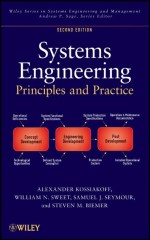
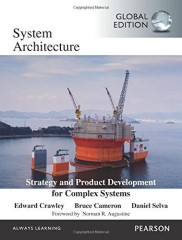


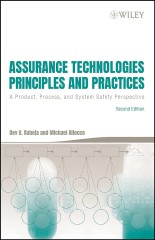
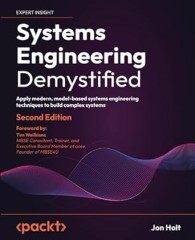
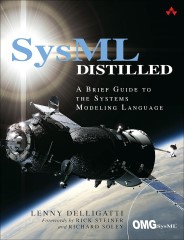

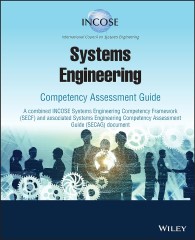

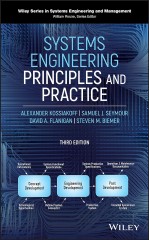












Comment on “Safety Assurance Simplified: A Step-by-Step Guide to Effective Practices”